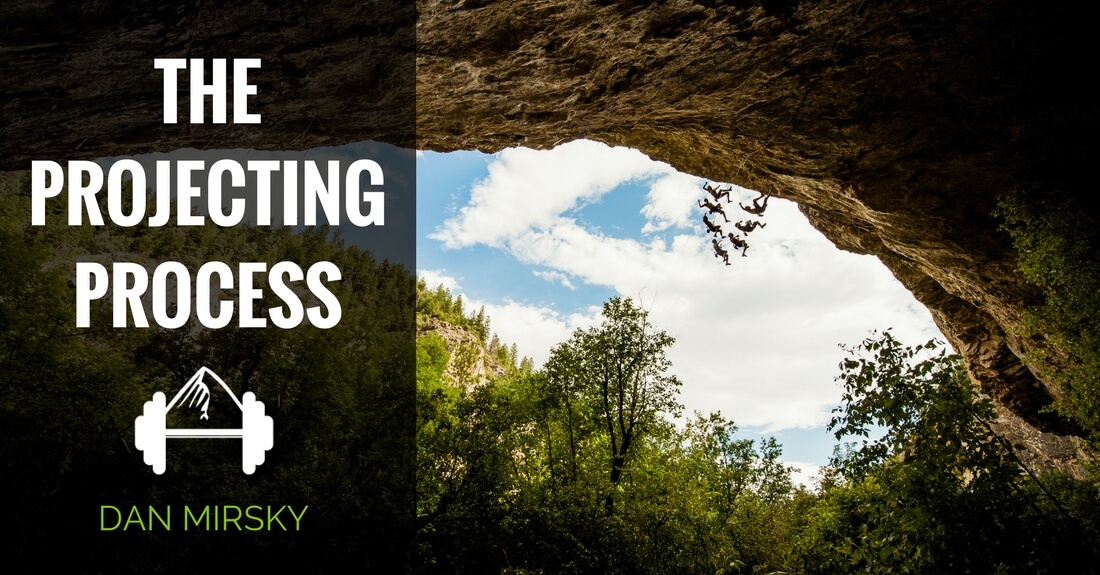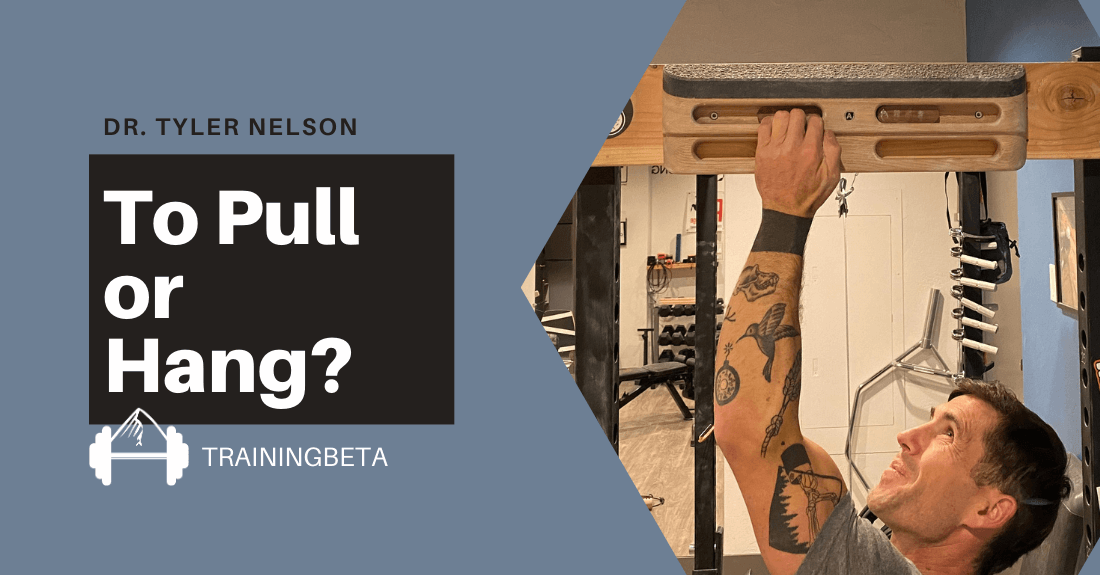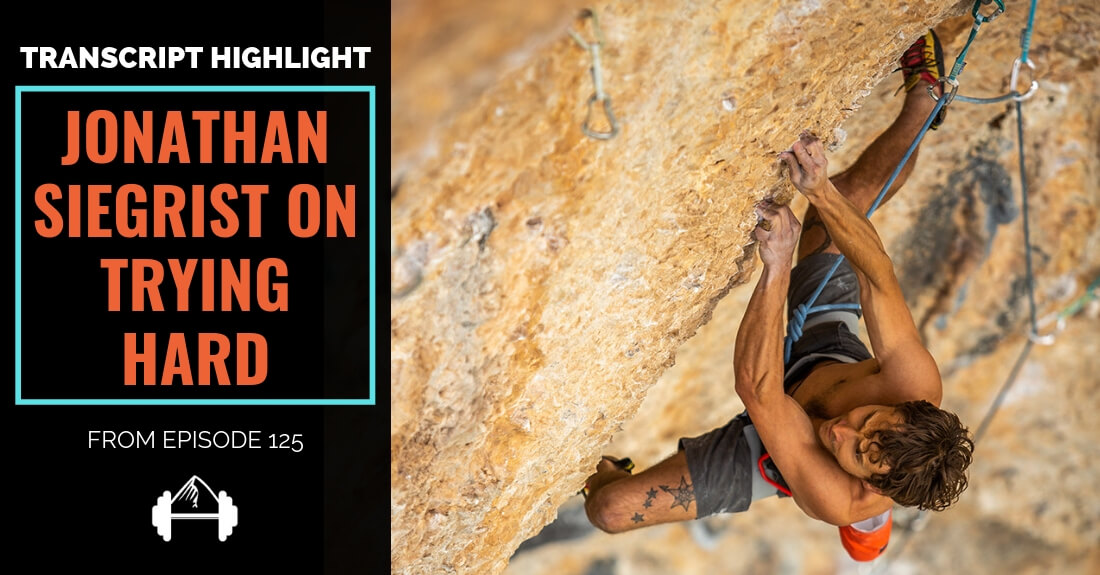If you watch videos of the top climbers on their hardest redpoints, their climbing is incredibly precise as they flow straight through difficult sequence after difficult sequence. The send can even look effortless. However, what you are not seeing in these movements is the entire projecting process and all the hard work that went into reaching this point.
A common misconception is that the projecting process simply consists of trying a climb long enough that you eventually claw your way to the top. Sure, projecting takes time, but there is an art to projecting hard climbs. Mastering the projecting process will not only help you send your goal routes much more quickly, but will also help open the doors to your bigger lifetime goals.
To help you learn the art of the projecting process, here’s an article written for TrainingBeta by climber, coach, and trainer Dan Mirsky. In it, Dan breaks projecting down into different phases and outlines what is involved in every step along the way. This is a very in-depth article and something climbers of all ability levels can definitely learn from.
The Projecting Process
By Dan Mirsky
Sending hard is not just about being strong; it’s also about being smart. Think of your strength and energy as a precious and limited resource. To give yourself the best chance of success, you need to allocate your limited resources in the most effective way possible. Being efficient and economical pays off! Below is an outline of strategies that I have developed and learned over my years of trying hard routes.
Phase 1: Learning The Beta
There is an art and lots of technique that goes into working a route in a productive way. To start, whether you are picking a route you hope to accomplish in a lifetime or quickly, the first thing you need to do is learn the beta.
This does not mean tying into the route you are hoping to eventually send and gunning for the anchors all full of piss and vinegar from the first move on.
Depending on the nature of the climb you are trying, it can take a lot of diligence and thought to unlock sequences and figure out beta that actually makes the route feel climbable. If approached strategically, you can get through this stage a lot faster and with a lot less wasted effort, leaving more energy for other climbing.
The first thing you must do is put your ego aside.
It doesn’t matter if you grab every draw, say take on every move, call up for your stick clip or lower down to the ground. You are in the research and development phase. You should be approaching the route analytically: check out holds, try moves and sequences, evaluate if they are efficient, ask yourself if the move could be done differently, try it, then either change your sequence or eliminate the other way as an option and move on.
Climbing lots of the moves poorly is ultimately not going to get you any closer to sending your project. Take your time and make sure your beta is sound.

Dan Mirsky sorting out his beta on Rifle’s Fat Camp. Photo: Claudia Ziegler
Once you can do all the moves in a way that you believe could result in a successful ascent, start trying them as sequences and think about how the route can be broken down into different sections. A good way to define a section is in between two ‘resting’ points. The end of the rope does not count as a resting point!
Once you have a good idea of how you are going to climb each section of the route, where you are going to rest, where the hardest part is, and where the redpoint crux might be, you have successfully completed Phase 1. Be Stoked! You just put in a lot of hard work and now you get to test how you did.
***Note: The opening phase of projecting often times doesn’t feel like lots of climbing, but it is!
Bouldering on a rope to figure out the most efficient way to climb a certain sequence of moves over and over again can really beat you down. Give yourself a break if you feel extra tired during this phase. Also, don’t be afraid to quit while you are ahead and leave your route behind for the day before it starts totally crushing you. Just like overtraining in the gym, over projecting can lead to fatigue and decline in performance.
Phase 2: Achieving Small Attainable Goals
Once you’ve done the moves and can identify the route’s different sections, start approaching those sections as mini routes. Try the easiest section first. Right now, it doesn’t matter if that section is the 1st or the 5th section of the route.
Wherever you start, make it a goal to “redpoint” this section of the route. Give it a couple tries and if you do this section, great. If you don’t, analyze how you did and where the failure came from. Does the beta work or does it need more refining?
I try and learn something new every time I try my project. If I do, I consider it a successful effort and move on either to another section of the route or save my stoke and energy for my next session.
Now, once you have completed the easiest section of the route, try the next hardest section. Don’t forget to practice the rests in between the sections as well. You’re going to have to be able to use them effectively when you are sending, so you might as well start practicing.

Dan Mirsky making links and going through the process on Necessary Evil, 5.14c/8c+
Finally, once you can successfully do each section and believe that you can rest and recover in between the sections, pick two of the sections and make it your new goal to link these sections together.
I stay in this phase of the process until I can do the route in two sections. Or, in other words, until my highpoint from the ground is the same as my low point to the the top. Only when my high point and low point meet do I consider Phase 2 completed and think it’s time to redpoint!
**NOTE: Goal-setting is very important during Phase 2. Obviously, the ultimate goal is to send. However, this is a big goal. If sending is all we think about every time we tie in, it can feel overwhelming and make every effort that isn’t a send feel like a failure. However, if we break the route down and have smaller achievable goals (i.e. the mini routes discussed above), we can have regular success on the project. This is simultaneously motivating and moves us towards our ultimate goal of sending.
Phase 3: Overlaps and The Beginning of Redpointing
At this stage of the process, you are actually tying in to send your project. However, it is critical to continue to be smart, analytical, and efficient.
Now, It’s likely that once you start trying to redpoint, you will encounter a spot on the route where you fall. If the fall wasn’t the result of an error like a silly foot slip or messed up beta, this is likely your crux or at least one of the cruxes.
Once you have identified this section, DO NOT do the following: fall at the crux, dog back up the rope, wait till you are no longer pumped, pull back on at the spot you fell and climb to the top and then talk about how easy it felt and how close you are to sending.
I cannot stress this enough. If you fall more than once on a given move, start trying to overlap your way through that section.

It’s not all clipping chains! Dan Mirsky whipping off his project Fat Camp. Photo: Claudia Ziegler
By overlap, I mean taking the place you fell from, starting below that point, and climbing through the section cleanly. Aim for the next rest and eventually the top of the rock climb.
Overlapping is a great tactic that you can employ to help you get through a hard section of climbing. Start small and grow the overlap. Try to identify a rest before the hard section and see if you can’t overlap through that section from the rest. This will not only give you the confidence that you can successfully climb the difficult section, but it will also give you a realistic representation of how the moves are going to feel when you are climbing them from the ground.
The idea here is simple: you are never going to feel totally fresh and not pumped when you reach the hardest section of a rock climb, so why practice it that way?
If you can grow your overlap down to the last decent rest, this is a great success and great for mental confidence on this hard section. The next time you get to that rest from the ground you can say to yourself, “I have already done it from here.”
Eventually, as you increase your overlaps enough, you will “one-hang” your route. An overlapping one-hang is very close to success and, if you keep overlapping from a lower and lower point, eventually you will be standing on the ground with no more excuses.
Phase 4: Avoiding One-Hang Purgatory
A one hang on a project can sometimes mean success is near. Sometimes it all goes according to plan: we move through the phases, we do the necessary leg work, our beta is sound, our mind is strong, we feel good physically, and then we execute. BOOM! Well done! You can appreciate your hardwork and success and then it’s on to the next.
Unfortunately, projecting doesn’t always follow this script. There are a lot of potential pitfalls during the projecting process and sometimes we get stuck in one-hang purgatory. This can be a really difficult place to be mentally.
However, instead of just living in one-hang purgatory for days, weeks, months, years (I have literally seen this) use some of the below strategies to try and avoid it altogether.
Isolate A Section
If part of the route is giving you significant trouble, spend some time isolating that sequence. On a route, this might be a sequence of moves or a several-bolt section. On a boulder, it might literally be one move or one hold. Ultimately, it doesn’t matter because the approach is the same…
Do whatever you need to do to access this section of climbing using as little effort as possible and spend time working on this section in isolation. This means stick clipping up your route, pulling past sequences, grabbing draws, etc. Anything goes…
When you are isolating this section, really get into the finer points of the movement. Are you using your body well? Grabbing the holds in the right way? Using your feet? How about your core?
Sometimes, spending time with a section and really learning it is what you need to do. It’s not glamorous, but it’s effective.

Dan Mirsky working on The Crew 5.14c before his send. Photo: Michael Lim
Reassess and Make Changes
With some projects, even when we’ve tried our best to avoid it, we get stuck on a move or section of the route. It happens.
When it does, it can be really helpful to go back to some of the earlier projecting phases to re-engage our analytical brain and retest our work.
Ask yourself, ‘What do I know about this section of climbing?’. Then, analyze your performance. What is causing the failure? Can you change something physical to address this? Maybe the beta you worked out isn’t the best? Test it against another method. Think outside the box. Sometimes, we can get tunnel vision and by stepping back and trying to think of a completely different way of climbing a sequence of moves we might realize “our way” was not the only way. Talking to other climbers who are trying the route can give you new ideas, too.
Is the issue mental? If so, sometimes a change is critical to break through a mental barrier. Even if the change is not an improvement and just different, it can be enough to get us unstuck. You can climb yourself into a pattern or routine of climbing to the same spot and then falling. A change might be exactly what we need to break the developing habit of falling and the feeling of failing.
Whether it’s a change in our beta, our pre-climbing routine, or even eating something different for breakfast, making some sort of change to break the pattern can help make the experience seem new and different. This can be a really valuable tactic.
A Few More Things to Keep in Mind

Dan Mirsky in the upper crux of his route Solid Gold 5.14c/8c+. Photo: Luke Olson
Managing Expectations
This is big.
If you have gotten close to sending, you can start to expect success and see everything else as failure.
Before you try your project, set your intention to try hard and climb well. Take a moment to think about the work you have put in. Believing in the process can help you believe in yourself and feel confident. Finally, before you launch off, let it all go. Climb, flow, and find that special place called the Zone.
***Note: Effectively managing expectations is not easy for some of us, myself included. The best I can offer is keep at it, practice, be mindful of your headspace before you start climbing, and don’t be too harsh on yourself.
Overdoing It
When we are close to success, it’s easy to think you should keep trying. Sometimes this is a great strategy. After all, you’ve got confidence and momentum on your side.
However, it is important to remember that we have limited resources and maybe one more try today won’t be as good as a fresh try tomorrow or the next day after a rest. Too many tries in a day, a week, or month can leave us feeling depleted physically and mentally.
It’s one thing to put in work on a project: it’s another to have the project feel like work.
I try my best to avoid the latter and being efficient in your process can really help this. If you go and beat your head against the wall unnecessarily, doing the same sections over and over or, worse, making the same mistakes over and over, you are likely just going to knacker yourself to the point of not having any more energy to climb.
Play it smart, have mini and achievable goals, stay psyched, and you will get closer to your big picture goal.
When you are close, fewer, fresher, more psyched sessions are usually more productive than more, tired, “work” sessions. To put forth your best efforts, prioritize being rested and recovered when you go to try your project. Once you’ve given it your best on any given day, be ok with letting go and coming back with fresh stoke and muscles.
Climb Other Things
After you’ve put forth your best effort on your project, a great thing to do to keep the stoke high, stay in shape, and have some fun is to remember to climb other things.
Yes, there are other rock climbs besides your warm-ups and your project.
As it turns out, doing other climbs is fun and really good for your climbing. I recommend taking down the difficulty a couple notches, focusing on climbing well, and having success be the pattern instead of failure. Once you clip the chains on some other easier routes, the next time you tie into your project you might find you feel both strong and confident.

Dan Mirsky running an end of the day lap on Terror Dome 5.14a. Photo: Matt Pincus| @mpincus87
Author’s Note:
Each individual’s climbing experience is just that, individual. You and I are different and we experience climbing differently. It’s one of the things I love about climbing. I hope some of what I have outlined here helps you climb your best and helps get you to the top of your next project, but I make no guarantees and offer no warranties. Use the things that resonate with you and leave the others; adapt what I have said here to what makes sense for you and ask other people about their process. Ultimately, I hope you find an approach that works for you and is fun.
See you out there!
Cover photo: courtesy of Claudia Ziegler
About The Author: Dan Mirsky

photo: Andy Wickstrom
Dan Mirsky is a 35-year-old New Yorker who got stuck in Colorado 15 years ago. He has been climbing in Rifle for over a decade and has no plans to ever stop. When he is not climbing in Rifle, Dan can be found traveling in search of warmer temperatures and great climbing. In the last few years, Dan has also established himself as a successful climbing coach and trainer working with climbers of all levels out of The Front Training Room in SLC.
After 10 plus years of hard sport climbing Dan still considers himself a student, learning how to be a better rock climber every day. He has redpointed 30+ 5.14 rock climbs up to 5.14c all across the country, including Route of All Evil (14b), 50 Words for Pump (14b), Bad Girls Club (14c), Lungfish (14b), The Crew (14c), and an FA of Solid Gold (14c), the direct line to Golden, to name a few. He is always psyched to climb and psyched to see others succeed. He also has an impressive memory for beta, so if you’re projecting something he’s done he can give you all the details….





Leave A Comment